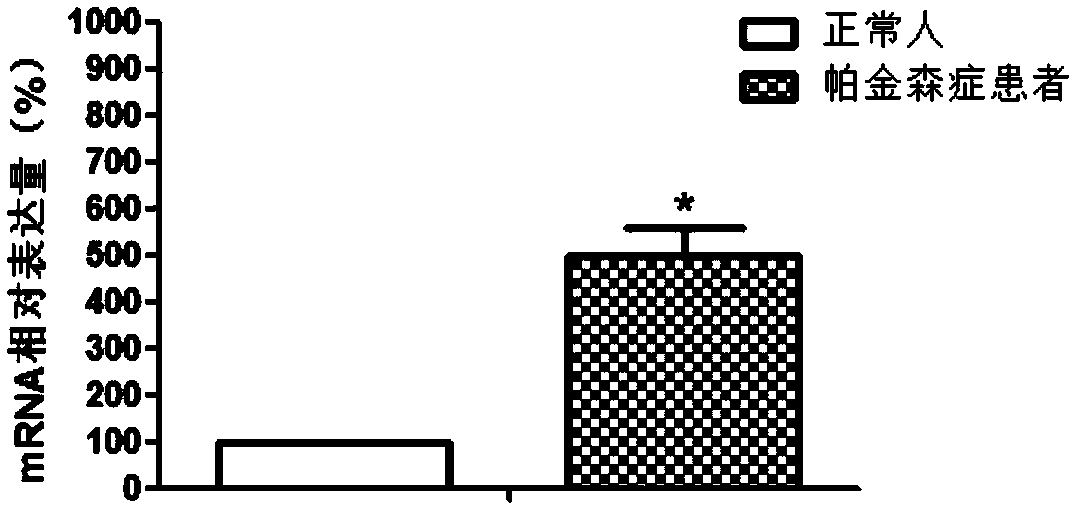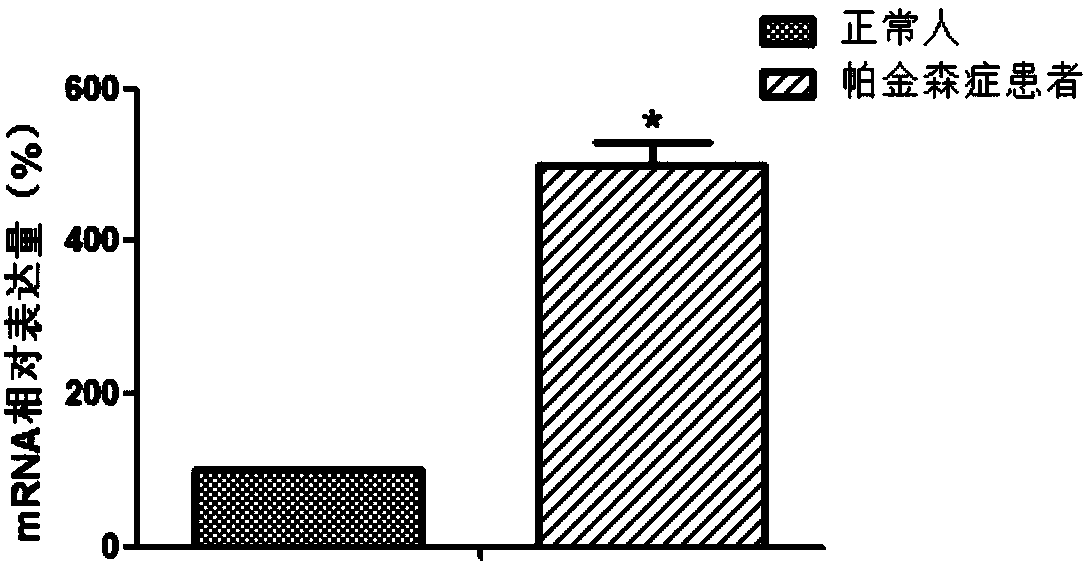Application of ARHGAP26 gene to preparation of Parkinson diagnostic tool
A Parkinson's disease and tool technology, applied in the field of molecular diagnosis, can solve the problems of slow progress in pathological mechanism research, achieve timely gene diagnosis and reduce mortality
- Summary
- Abstract
- Description
- Claims
- Application Information
AI Technical Summary
Problems solved by technology
Method used
Image
Examples
Embodiment 1
[0036] Example 1 Screening for genes differentially expressed in Parkinson's disease patients and normal individuals
[0037] 1. Research object:
[0038] Collect 10 cases of primary PD patients, 5 males and 5 females, aged 32-85 years, with a course of disease ranging from 5 months to 20 years. PD inclusion criteria: all diagnostic criteria meet the clinical diagnostic criteria for PD (refer to "Jiang Yuping, Wang Jian, Ding Zhengtong, et al., Diagnostic criteria for primary Parkinson's disease, 2005, Chinese Clinical Neuroscience, 2006, 14:40" ). Exclusion criteria: (1) essential tremor; (2) secondary parkinsonism; (3) severe dementia, dysarthria; (4) patients with other mental diseases. This study was approved by the Hospital Ethics Committee and all patients signed informed consent.
[0039] Normal group: 10 healthy volunteers aged 32-80 were selected, 5 males and 5 males.
[0040] There was no significant difference in age and gender between the two groups (P>0.10), w...
Embodiment 2
[0066] Embodiment 2QPCR experiment verifies the genes differentially expressed in patients with Parkinson's disease and normal people
[0067] 1. Research object:
[0068] The screening criteria were the same as in Example 1, 50 cases of Parkinson's disease patients and 50 normal persons.
[0069] 2. Extraction of total RNA in blood
[0070] Step is with embodiment 1.
[0071] 3. Reverse transcription
[0072] 1 μg of total RNA was reverse-transcribed to synthesize cDNA using reverse transcription buffer. Use 25μl reaction system, take 1μg total RNA for each sample as template RNA, add the following components to the PCR tube respectively: DEPC water, 5× reverse transcription buffer, 10mmol / L dNTP, 0.1mmol / l DTT, 30μmmol / l Oligo dT, 200 U / μl M-MLV, template RNA. Incubate at 42°C for 1h, then centrifuge briefly at 72°C for 10min.
[0073] 4. QPCR
[0074] (1) Primer design
[0075]QPCR amplification primers were designed according to the coding sequences of ARHGAP26 gen...
Embodiment 3
[0091] Example 3 Verification of expression products of differentially expressed genes in patients with Parkinson's disease and normal people by immunoblotting experiments
[0092] 1. Clinical object: same as embodiment 2.
[0093] 2. Mononuclear cell isolation
[0094] Take 10ml of venous blood from patients with Parkinson's disease and normal people, inject it into a sterile vial containing heparin, and shake it gently immediately after capping. Add an equal volume of HBSS (NaCl 8.0g, NaCl 2 HPO 4 0.132g, KH 2 PO 4 0.06g, KCl0.4g, phenol red 1ml, NaHCO 3 0.35g, D-glucose 1.0g, dissolved in 1000ml double distilled water), to reduce the aggregation of red blood cells. Draw 8ml of lymphocyte stratification solution into a 50ml centrifuge tube, slowly add the diluted blood along the tube wall, keep the interface clear, do not mix the two, centrifuge at 20°C 2000r / min for 30min, carefully absorb the stratification solution and plasma transfer The turbid off-white layer,...
PUM
 Login to View More
Login to View More Abstract
Description
Claims
Application Information
 Login to View More
Login to View More - R&D
- Intellectual Property
- Life Sciences
- Materials
- Tech Scout
- Unparalleled Data Quality
- Higher Quality Content
- 60% Fewer Hallucinations
Browse by: Latest US Patents, China's latest patents, Technical Efficacy Thesaurus, Application Domain, Technology Topic, Popular Technical Reports.
© 2025 PatSnap. All rights reserved.Legal|Privacy policy|Modern Slavery Act Transparency Statement|Sitemap|About US| Contact US: help@patsnap.com


